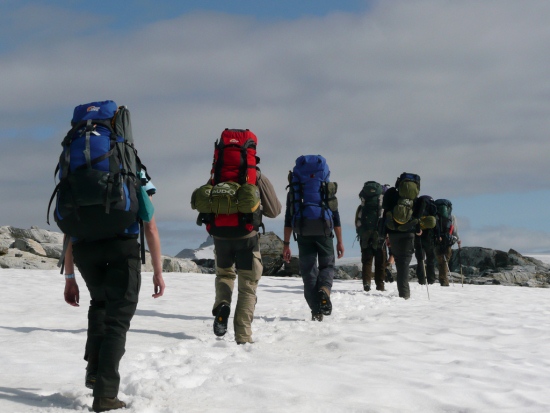
So then, How to pick a backpack for when you go travelling? When you eventually pick a backpack it will be one of the best and most important purchases you’ll make before you leave. When I finally choose my backpack, it started to sink in that I actually going travelling!
Don’t forget to check out The Ultimate Travel Checklist: Travel Tech for the Modern Backpacker 2013 when you’re done here!
Picking the right backpack is a matter of personal choice. The simple fact is, no matter how big your backpack is, you will manage to fill it up. The best tip thing you can do is to pick a smaller backpack.
Between 40 to 60 litres is fine. Don’t be fooled by that sales assistant trying to sell you a massive bag for more money, claiming you may need the extra space. Starting small means that any extra items you think you need won’t fit. Simple.
Buying a backpack isn’t a time to cut costs. It has to be comfortable and functional enough to suit your needs.
Are you climbing Mt Everest or chilling on a beach in Thailand? You should consider a major brand name like Berghaus, Quecha, Jack Wolfskin or The North Face.
Other important options to consider when you pick a backpack
Top loading backpacks
With a top loading backpack, all the contents are accessed through a flap at the top. These bags lend to be longer and thinner, and more suited to trekking. The downside is that to get anything from the bottom of the bag, everything on top has to come out.
Side opening backpacks
Side opening backpacks usually offer easy access through one main zip. While more convenient than top-loading backpacks they’re not really designed for vigorous trekking. They tend to be wider, hang lower and designed around the ease of access feature. This is my preferred style of backpack.
Varied carrying options
We all know the usual ‘on the back, over both shoulders’ method of carrying a backpack. Some backpacks allow for the shoulder straps to be zipped away and carried by a handle, or over one shoulder with a detachable shoulder strap. Helpful when you check-in at the airport and you don’t want anything hanging off to get damaged.
Detachable day bag
You might see some backpacks quoted as 60+10 litres in size. This usually means that the ‘+10’ is a detachable day bag is zipped onto the main backpack. While being a nice idea, travelling with the detachable bag in place might cause you to lean forward to counter the weight. They tend to be less durable, lacking accessories. If you do have to travel with a day bag, wear it on your front.
Compression Straps
These pull everything nice and tight in your backpack and stop things from shaking around inside. Usually on the outside, some bags have internal compression straps for dirty laundry etc
Extra accessories can include:
Waterproof cover
Some bags have an integral waterproof cover you can easily pull over your bag when the heavens open. They also make your backpack look a bit more discrete when you’re on a bus or train journey.
Hydration system
Backpacks with hydration systems have a compartment for a ‘bladder pack’. CamelBak is a very popular brand. Basically a slim water container that slides into your backpack. A tube usually comes out of an opening in the top so you can have a drink on the move.
Secret or internal pockets
Internal pockets keep the inside of your backpack organised. A secret pocket is useful for stashing some emergency cash or copies of your important documents.
Side pockets
Some backpacks have external side pockets which can be used for water bottles and other items you want access to quickly. Walking poles can be attached to some backpacks too.
‘One fits all’
Backpacks that have this feature allow the wearer to fit the backpack correctly themselves. Usually involving one main adjustable frame / strap that the wearer can alter to get the backpack correctly fitted.
Special fit backpacks
There are backpacks designed for women who have a more curvy or petite body shape. With shorter internal frames and narrower shoulder padding for added comfort.
All these features aside, the most important feature is that it fits comfortably. All backpacks feel great when they’re empty. Try it on, ask the salesperson to put something heavy in there.
Ask yourself:
- Is the padding adequate?
- Do the waist straps sit on your hips without cutting into you?
- Are they easily adjusted? Are they high enough?
If not, try a different size or a different bag altogether until you find the right backpack for you.
Happy shopping, and enjoy the one of the best purchases you’ll make before travelling!








Comments are closed.